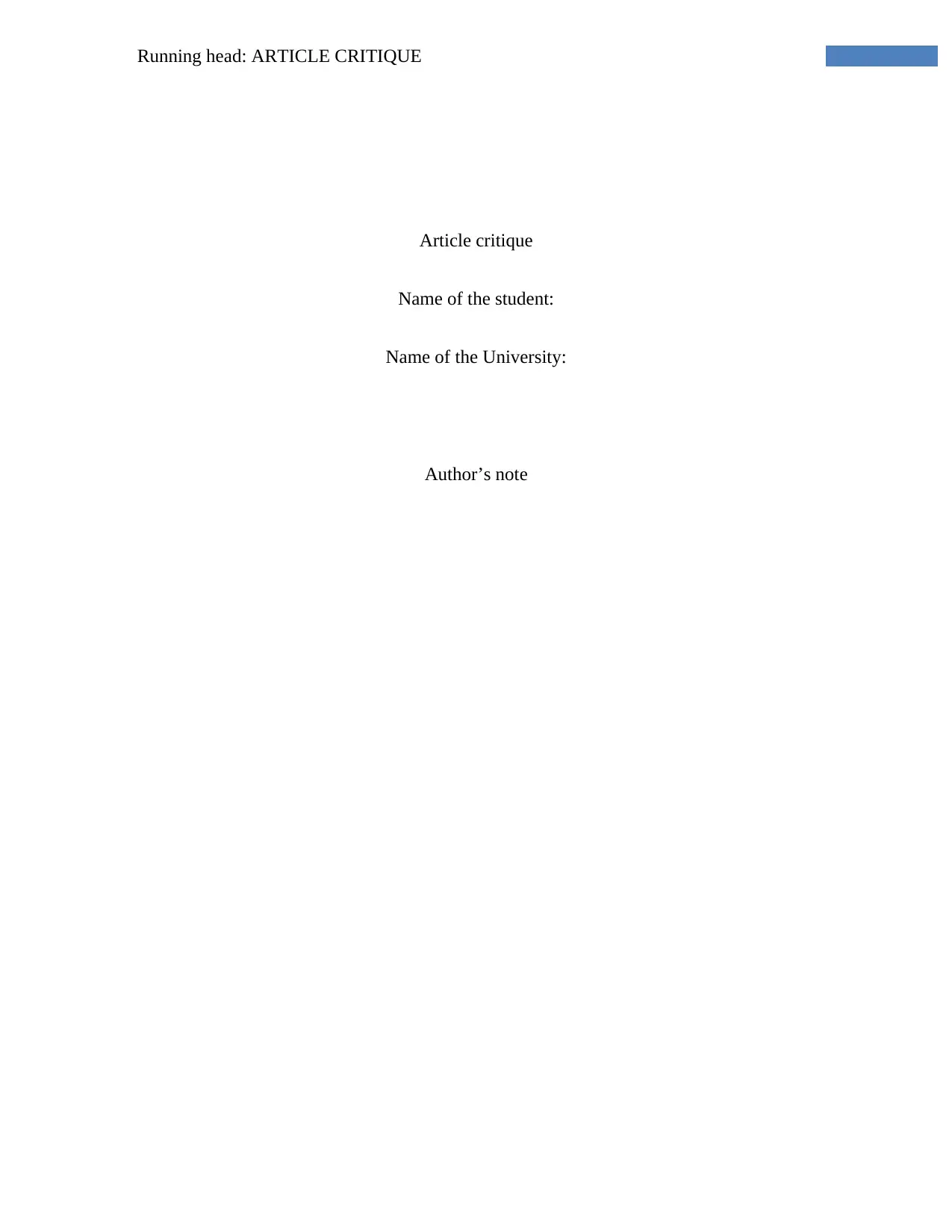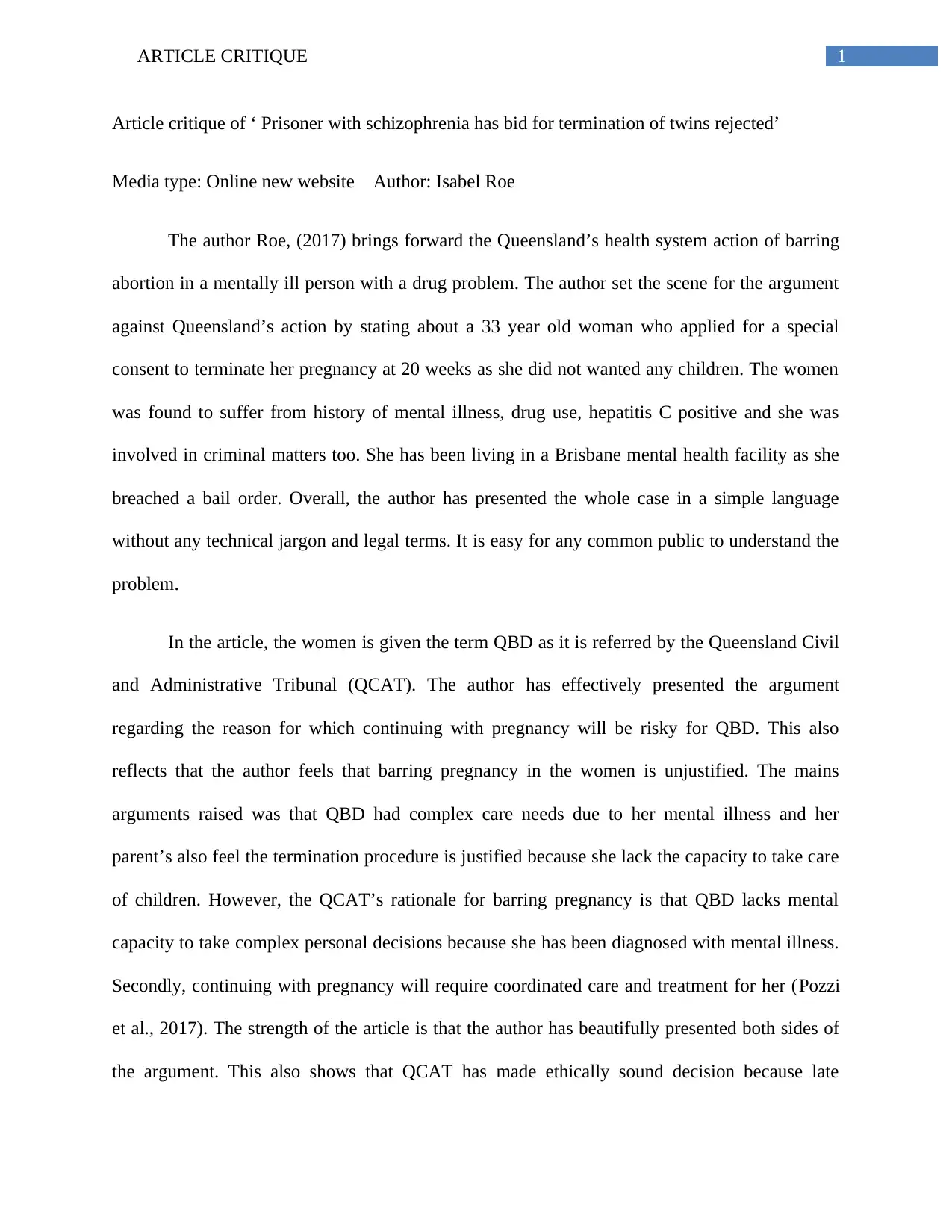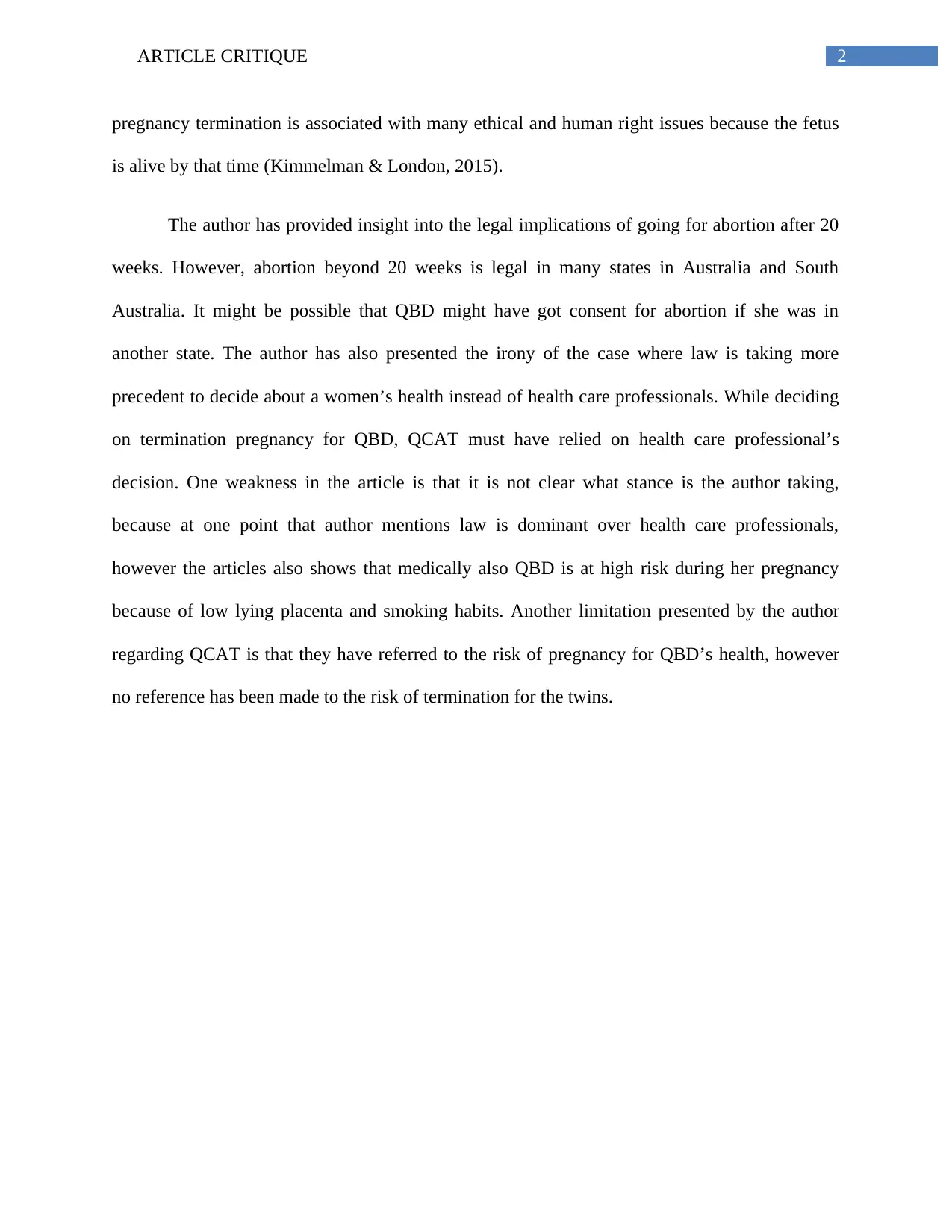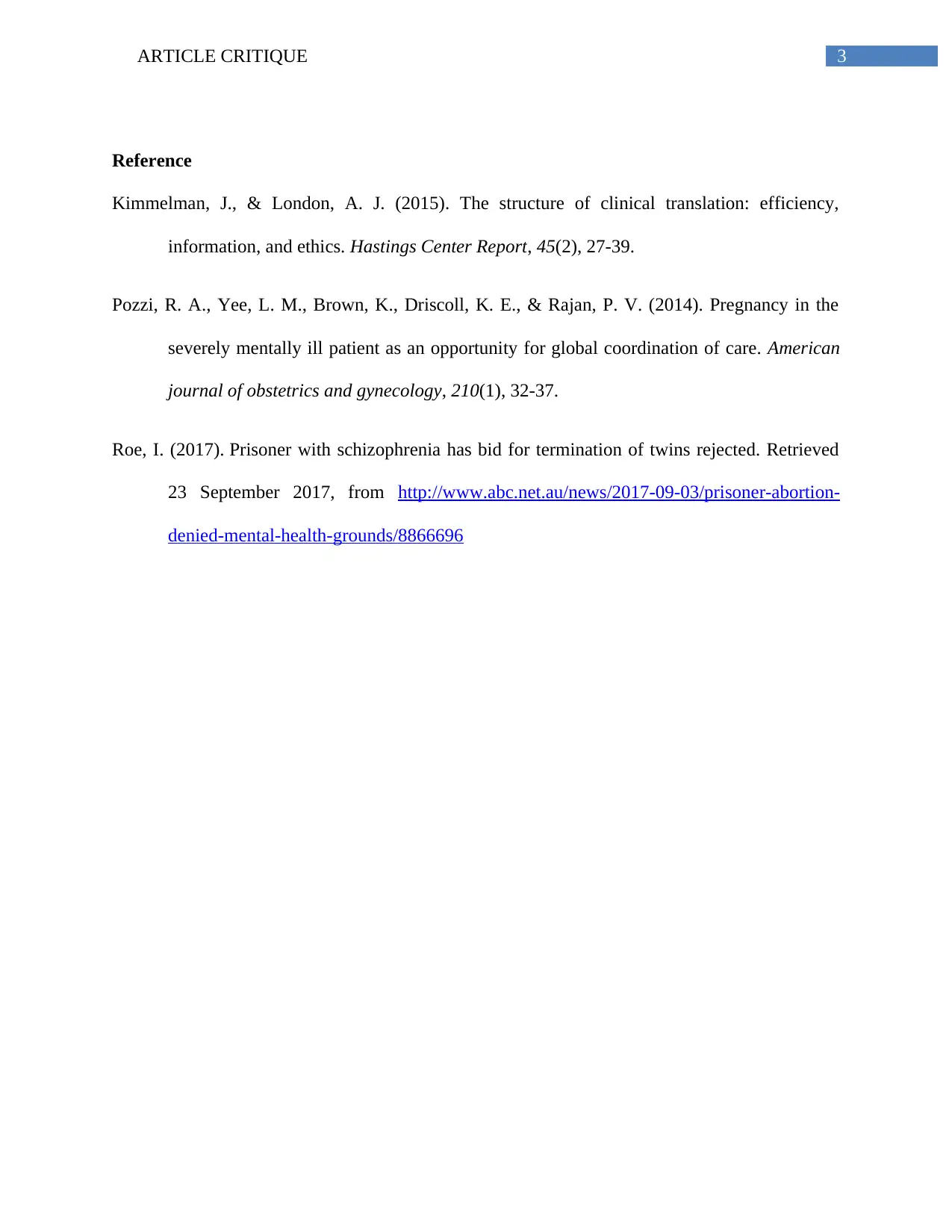Article Critique: Prisoner's Abortion Bid and Ethical Considerations
VerifiedAdded on 2020/04/07
|4
|732
|50
Report
AI Summary
This assignment is an article critique of a news report by Isabel Roe (2017) concerning a prisoner with schizophrenia who was denied an abortion in Queensland. The critique analyzes the case of a 33-year-old woman, identified as QBD, with a history of mental illness, drug use, and involvement in criminal matters, who sought to terminate her pregnancy. The author presents the arguments for and against the Queensland Civil and Administrative Tribunal (QCAT)'s decision to deny the abortion, highlighting the complex care needs of QBD due to her mental health issues. The critique emphasizes the ethical considerations, including the legal implications of late-term abortions, the balance between the law and healthcare professionals' decisions, and the potential risks to both the mother and the twins. It also identifies the strengths of the article, such as its clear presentation of both sides of the argument and the ethical soundness of the decision, while pointing out weaknesses like the unclear stance of the author and the lack of reference to risks of termination for the twins. The critique references the legal and ethical implications of the QCAT decision.
1 out of 4











![[object Object]](/_next/static/media/star-bottom.7253800d.svg)